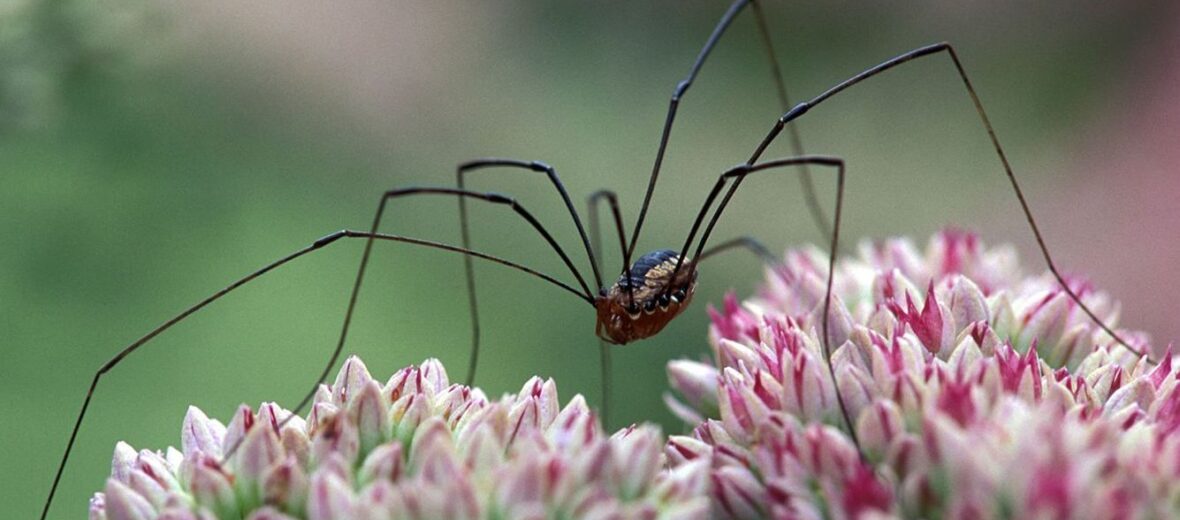
One of the biggest animal myths I know of is the myth that daddy longlegs are the most venomous spider in the world. Well, there are 2 things wrong with that statement: The first being that even though they are arachnids, they aren’t spiders; they’re more closely related to scorpions than spiders. 2, they aren’t even venomous at all. How’s that for a shocker? Mind blown? While they are arachnids, they aren’t true spiders. They don’t make silk, they have fused body segments, and only 2 eyes; as opposed to 6 or 8.
First the Stats…
Scientific name: Opiliones
Length: Up to .9 inch with a leg span of up to 6 inches
Lifespan: Up to 3 years
Now on to the Facts!
1.) These arachnids are around 400 million years old.
2.) Daddy longlegs can be found on every continent, sans Antarctica.
3.) They have many names. Some call them shepherd spiders, harvestmen, and then there’s their scientific name: Opiliones.
4.) There are around 7,000 known species of Opiliones described to date.
5.) Daddy longlegs participate in a behavior called “clumping”. This is where they bunch up together in large clumps. It is believed that they do this in order to help conserve moisture and also protect themselves from predators. If disturbed, they scatter. This confuses predators and gives the longlegs a chance to escape certain death.
But wait, there’s more on the daddy longlegs!
6.) Harvestmen are nocturnal (active at night).
7.) Even though they have such long legs, they aren’t very mobile. They tend to just camp out in crevices during the day and barely walk around at all at night.
Did you know…?
They might not be venomous, but they can produce chemical excretions from glands on their bodies that wards off predators. Eww, stinky!
8.) Aside from the chemical defense factor, shepard spiders are also great at camouflage. They blend in perfectly with the leaf litter and dead wood, where they hang out.
9.) Unlike other arachnids, when they lose a leg, it’s permanent. They don’t grow back on their next molt.
10.) Daddy longleg spiders routinely keep themselves clean via a method called “threading”. This is where they slide their appendages through their pincers and strip off mites and dust from their legs.
Now a Short Daddy Longlegs Video!
Now a Daddy Longlegs “Clumping” Video!
Also, check out the Critter Science YouTube channel. Videos added frequently!
Want to suggest a critter for me to write about? Let me know here.



